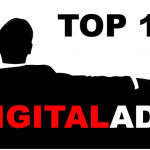Haul videos. Have you heard of this trend? Young adults, mostly girls, come home from the mall, lay their loot out and film it for upload to Youtube. Haul videos. Ever driven by a pickup in the Prairies and seen the deer horns hanging out the back? Anthropological, kind of, isn’t it? Don’t gasp. We do it in the car on the way home. Look in the bag at our new runners or new hoodie and admire our purchase. Run up to our room and put it on, admiring our new, cooler, redefined self in the mirror. Filming and posting is an extension of our online existence. This is a great mix of Gen Y’s faves: shopping and tech.
Is there any value here for consumers or is this just voyeuristic or narcissism run rampant? Turns out that there is value. The vloggers (read video bloggers) don’t just film high end loot hauls but talk about bargain basement shopping and deals, pointing consumers to sources and offering tips. Some of the best haulers have inked sponsorships and advertising deals. With millions of views, and perceived authenticity from the vlogger by consumers, manufacturers want in on this game. (Endorsements and free merchandise must be disclosed.) Some girls are making big bucks. Is this the next big thing? Really, whether it is or isn’t, it’s a trend that companies are putting some bucks behind as more consumers tune into this alternative channel of product information.



